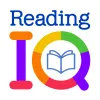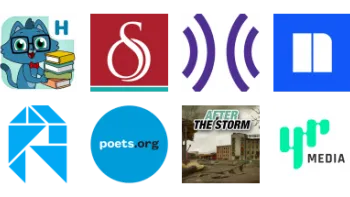Take a look inside 3 images
ReadingIQ
Pros: The collection consists of high-quality, recognizable books and covers lots of topics.
Cons: Some of the most commonly found features of digital libraries are missing.
Bottom Line: This is a reading app that focuses successfully on the reading; don't expect many bells and whistles though.
Use ReadingIQ in the same way you'd use a traditional library. Students can read on their own, or teachers can project books on a smartboard and read to the class. Create an account for each student to set an appropriate reading level and keep tabs on how much they're reading. In their own accounts, students can browse titles and read what looks interesting and build their own library. Teachers can assign a theme (for example, biographies of important people in history) and let students find and read material on that theme. Or teachers can assign specific books based on reading level or by topic to get students investigating a particular subject or literature theme. Assign follow-up activities offline that require students to think critically or create reports about what they've read. Concepts of plot, theme, character development, and so on can follow a work of fiction. There are also plenty of nonfiction choices, which makes it easy to use the ReadingIQ library for a variety of subjects, including science, social studies, even art. Historical reenactments, videos, reports, art projects, and further research can deepen learning after reading a nonfiction book.
ReadingIQ is a digital library app from Age of Learning (the creators of ABC Mouse). It features over 7,000 digital books for a wide range of reading levels. Teachers can sign up for a free account by providing their email address and some information about their school. They can then create student profiles with a name, an avatar, and a reading level to get login credentials that can be emailed to a student's family for at-home use. Students' libraries auto-populate with books based on their indicated reading levels. There are picture books, chapter books, beginning reader books, books with no words, and books with no pictures. All books are classified according to grade and/or Lexile level as well as category such as Adventure and Mystery, Earth and Space, or The World of Work. Books in the Show What You Know category have a short comprehension quiz at the end. The books are traditional, published books in digital form (there's a large number of National Geographic titles as well as many classic, well-known stories) and have no fancy bells and whistles. Tap a book to open it, tap the screen to turn pages, and tap the heart to mark it as a favorite. In addition, when teachers read books from their teacher account, they can tap a clipboard icon to assign it to their students. When students finish reading a book, another one loads automatically. My Shelf keeps tabs on what books students read and how many minutes they spend reading. Teachers and students can access the library on a tablet or on the web.
Without a trip to the library, students can easily access and choose from a moderately diverse treasure trove of books. Teachers, however, shouldn't expect any digitally enhanced special features. ReadingIQ has lots of real, published books that are high quality -- even award-winning. You'll find great classics like Jumanji, series like The Boxcar Children, and newer amazing titles like David Wiesner's beautiful wordless picture books. There are also lots of nonfiction titles, including many -- maybe even too many -- National Geographic ones, but new books are regularly added, so the library should get more diverse over time. The library is heavily biased toward picture books and easy reader or stepped reader chapter books. There's not much literature available for older kids.
A small number of books include a "read to me" option, but other than that, there are no fancy digital tricks here. Although it's nice to put the focus on non-distracted reading -- and research suggests that layered-on interactivity can detract from learning anyway -- it would still be nice to see a few, less-intrusive extras that make good use of digital affordances. This would justify the use of a digital library vs. just visiting a local library (or using Libby). Another more minor quibble is that navigation between the teacher account and student accounts is awkward and could be improved.












